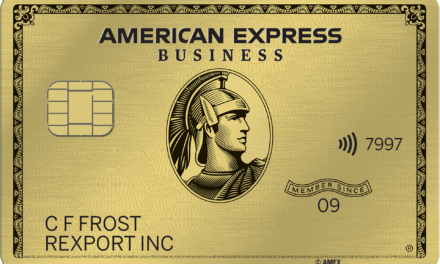The American Express Everyday Preferred is a decent mid-tier travel card. However, it does not compare favorably with other mid-tier cards like the American Express Green Card, Citi Premier, and Chase Sapphire Preferred. This post suggests how American Express can possibly improve the Everyday Preferred, giving them another product to let them compete in the mid-tier card market.
Everyday Preferred Overview
The American Express Everyday Preferred card is a decent mid-tier travel card. It has a $95 annual fee (NOT waived the first year) and it earns valuable and versatile Membership Rewards (MR) points.
The Everyday Preferred offers a sign-up bonus worth 15,000 MR points, which can be earned after spending $1,000 in the first three months. This is a decent bonus, but its paltry compared to competing cards with similar annual fees.
Plus, the Everyday Preferred earns 3x MR points at Grocery Stores and 2x points at Gas Stations. It also comes with a 50% points bonus that can be earned after using the card 30 times per month. This bonus is nice, but the minimum transaction threshold is very high. Those with multiple cards will especially agree.
Possible Changes
American Express can improve the Everyday Preferred with any of the following suggestions:
Increase the Sign-Up Bonus
One of the main drawbacks of the Everyday Preferred is its sign-up bonus. Competitors often have much larger bonuses worth at least 50,000 points. For example, the Citi Premier and Chase Sapphire Preferred each come with bonuses worth 60,000 points. Why can’t the Everyday Preferred compete on this front?
American Express should increase the bonus to at least 40,000 MR points with a $2,000 minimum spend. Increases in points also mean increases in minimum spend, so that part is justifiable.
Add a $50 Annual General Travel Credit
General travel credits have become popular since the introduction of the Chase Sapphire Reserve in 2016. American Express has continued to offer their infamous airline incidental credits while their competitors have offered more general travel credits.
It’s time for American Express to evolve and compete. Adding a $50 general travel credit will help them compete with Chase, Citi, and other issuers. It will also reduce the “net” annual fee on the Everyday Preferred to just $45. A lower annual fee will make this card more attractive to millennials.
Add a $50 Annual Streaming Service Credit
Millennials are a great segue to this potential perk. If not a general travel credit, a streaming service credit would be awesome for many people. Not only will the “net” annual fee be reduced, but people would use this credit given the growing popularity of streaming services.
American Express has recently added a streaming services bonus category to the Blue Cash Preferred. An executive from the company has also stated how well they know their customers, most which are millennials. They can use that information to persuade that niche to apply for the Everyday Preferred if they want to travel. Such a customer base and knowledge thereof is a great foundation for a credit like this one.
Add a 4x Hotels Category
The bonus categories in groceries and gas are great for many people. But the Everyday Preferred card’s current earning structure is no longer competitive. Amex needs to add another bonus category to get back in the competition.
Hotels are a great category for this card. American Express already has a category for airfare on its Platinum cards. But they don’t have any categories for hotel expenses. The issuer can take advantage of this and take some market share away from Chase, Citi, and other issuers.
The Citi Prestige already earns 3x points on hotels. And the Citi Premier and Chase Sapphire Reserve both earn 3x on general travel, including hotels. Amex can compete with them by adding a 4x Hotels category.
Lower Monthly Spend Threshold
The monthly spend threshold is a unique concept. But its poorly executed on the Everyday Preferred in that its too high. American Express can’t expect Everyday Preferred cardholders to only use that card. This is because the card has bonus categories and they can’t maximize points by just using one card.
Lowering the threshold to 20 transactions per month would ease the burden for many to get the increase in points. Those with multiple cards are unlikely to use their Everyday Preferred for non-bonus spend. However, the lower transaction will increase such likelihood.
Change the Card Design
This change is more aesthetic than anything and it won’t affect the card. The new design on the Blue Cash Preferred is sleek and modern, as Amex moved away from the clear design. The old design looked cheap and pedestrian, despite the issuer keeping it for the Blue Cash Everyday card.
American Express can take the Blue Cash Preferred design but use a different color scheme for the Everyday Preferred card. They can perhaps use the same design but make the background green, white, or silver.
Alternatively, Amex can use the traditional charge card design but make the background a different color. The Amex Zync (unicorn?) card had this design with a white backdrop.
Final Draw
The American Express Everyday Preferred card was unique when it was released in 2014. But while the card has maintained its uniqueness, it is no longer competitive with other travel cards in its tier. This post hopefully addresses some of those concerns with possibilities for improvements.
Apply Today: American Express Everyday Preferred




